This article was co-authored by Dale Prokupek, MD and by wikiHow staff writer, Hannah Madden. Dale Prokupek, MD is a board-certified Internist and Gastroenterologist who runs a private practice based in Los Angeles, California. Dr. Prokupek is also a staff physician at Cedars-Sinai Medical Center and an associate clinical professor of medicine at the Geffen School of Medicine at the University of California, Los Angeles (UCLA). Dr. Prokupek has over 30 years of medical experience and specializes in the diagnosis and treatment of diseases of the liver, stomach, and colon, including chronic hepatitis C, colon cancer, hemorrhoids, anal condyloma, and digestive diseases related to chronic immune deficiency. He holds a BS in Zoology from the University of Wisconsin – Madison and an MD from the Medical College of Wisconsin. He completed an internal medicine residency at Cedars-Sinai Medical Center and a gastroenterology fellowship at the UCLA Geffen School of Medicine.
wikiHow marks an article as reader-approved once it receives enough positive feedback. In this case, several readers have written to tell us that this article was helpful to them, earning it our reader-approved status.
This article has been viewed 813,889 times.
If you’re having gastrointestinal issues, your doctor may have asked you to provide them with a stool sample for testing. While taking a stool sample may sound intimidating, the stool sample kit that your doctor provided has everything in it that you need for success. In this article, we’ll walk you through every step of the process, including preparing your toilet, collecting the sample, and handling it afterward. For a comprehensive guide with everything you need to know, read on!
Things You Should Know
- Attach the plastic “hat” from your stool collection kit to your toilet seat by placing it in between the toilet bowl and the toilet seat.
- Defecate into the plastic hat, being careful not to get toilet water or urine mixed in with your feces.
- Use the provided spoon to scoop feces into the container that your doctor gave you. Then, throw the hat away.
- Return the sample to your doctor’s office as soon as possible.
Steps
Preparing to Take the Sample
-
1Avoid taking medicine that will affect the sample. This includes anything that might soften your stools, such as Pepto Bismol, Maalox, mineral oil, antacids and Kaopectate. Also, if you have had a Barium Swallow, a metallic compound used to see abnormalities in the esophagus and stomach during an x-ray, postpone taking the stool sample and let your doctor know.[1]
- Tell your doctor what medicine you’re on and what you’ve taken recently before collecting your stool sample. This will provide them with a better understanding of any test results.[2]
-
2Get a stool sample kit from your doctor. Your doctor will provide you with the necessary equipment for collecting your stool sample, including a container for storing the sample. Ask about the procedure and if you can receive a “hat” to help catch and collect your stool. Follow your doctor's instructions and read any directions that come with your equipment carefully.[3]Advertisement
-
3Attach a “hat” to your toilet seat. The hat is a plastic device that looks like, well, a hat. It’s used to catch the feces so that it does not come into contact with toilet water. To put the hat in place, lift up the toilet seat, place the hat over the bowl, and then close the toilet seat again. Position yourself on top of the portion of the bowl covered by the hat.[4]
- Keep in mind that toilet water, urine, paper, and soap can all ruin the stool sample, so it’s important to use a collection device on top of your toilet.
- Using a hat is the best way to avoid any contamination in your sample. However, if your doctor didn’t provide you with one, there are some alternatives that we’ve listed below.
-
4Cover your toilet bowl with plastic wrap if you don’t have a hat. To use plastic wrap, lift up the toilet seat and then place the plastic wrap across the toilet bowl. Close the toilet seat on the plastic wrap to help secure it.[5]
- Tape the plastic wrap to the side of the bowl for additional security.
- Before you defecate, push down on the plastic to create a small dip in the plastic where the sample will collect.[6]
-
5Lay a sheet of newspaper across your toilet bowl as a last resort. If you don’t have a hat or plastic wrap, newspaper will work in a pinch. To use a piece of newspaper, lift up the toilet seat and place the newspaper across the toilet bowl, then close the toilet seat to secure it.
- Tape the newspaper to the side of the bowl to hold it in place.
- Push down on the center of the paper to create a place for the sample to settle.
Collecting and Storing the Sample
-
1Defecate into the collection device. Sit on the toilet and go to the bathroom like you normally would. Be careful that all of the sample is collected in the collection device and does not come into contact with the toilet water.[7]
- Don’t mix any toilet paper or urine in with the sample.
-
2Deposit the sample into the container with the provided spoon. Find the wooden spoon or small shovel-like instrument in your stool sample kit. Use the shovel to scoop a small bit of stool into the container. Try to take some stool from each end and from the middle.[8]
- The size of the sample will vary somewhat with the test. Sometimes your doctor will give you a container with a red line and liquid on the inside. Put in enough stool to raise the liquid to the level of the red line. If not, aim for a sample approximately the size of a grape.
- If you don’t have enough of a sample to fill up your container to the red line, wait until you need to defecate again and then collect more.
-
3Dispose of your collection device. Flip over the contents of the hat or plastic wrap into the toilet. Flush away the stool and deposit the hat or plastic wrap and any other garbage into a trash bag. Tie the trash bag in a knot and throw the trash away in a garbage can outside.[9]
- Do not flush the hat or plastic wrap, since that could clog your toilet.
-
4Refrigerate the sample. Place the stool sample in a sealed bag. If you cannot return it to your doctor’s office immediately, store the sample in the fridge. Label it with your name, date, and time of collection.[10]
- For some tests, stool samples need to be stored at room temperature. If you aren’t sure, ask your doctor or check the instructions inside of your stool sample kit.
-
5Return the samples to your doctor as soon as possible. Try your best to deliver the sample within 24 hours. The bacteria in your stool will grow and change. Usually, your doctor will want the sample back within 2 hours to get an accurate result.[11]
- Follow up with your doctor to get the results of your stool sample. Typically, you will get your results in 3 to 4 days.[12]
Expert Q&A
Did you know you can get premium answers for this article?
Unlock premium answers by supporting wikiHow
-
QuestionCan I keep the stool in the fridge overnight and drop it off morning?
 Mandolin S. Ziadie, MDDr. Ziadie is a board certified Pathologist in South Florida. She specializes in renal, transplant, and pediatric Pathology and has over 12 years of experience. She earned her medical degree from the University of Miami School of Medicine in 2004 and completed her fellowship in Pediatric Pathology at Children’s Medical Center in 2010.
Mandolin S. Ziadie, MDDr. Ziadie is a board certified Pathologist in South Florida. She specializes in renal, transplant, and pediatric Pathology and has over 12 years of experience. She earned her medical degree from the University of Miami School of Medicine in 2004 and completed her fellowship in Pediatric Pathology at Children’s Medical Center in 2010.
Board Certified Pathologist
-
QuestionIf a stool is collected on a Saturday afternoon when the lab is closed, will the stool sample be good until Monday morning when it opens?
 Mandolin S. Ziadie, MDDr. Ziadie is a board certified Pathologist in South Florida. She specializes in renal, transplant, and pediatric Pathology and has over 12 years of experience. She earned her medical degree from the University of Miami School of Medicine in 2004 and completed her fellowship in Pediatric Pathology at Children’s Medical Center in 2010.
Mandolin S. Ziadie, MDDr. Ziadie is a board certified Pathologist in South Florida. She specializes in renal, transplant, and pediatric Pathology and has over 12 years of experience. She earned her medical degree from the University of Miami School of Medicine in 2004 and completed her fellowship in Pediatric Pathology at Children’s Medical Center in 2010.
Board Certified Pathologist It depends on the tests being performed on the sample and how well the sample is maintained. Some tests cannot be performed on refrigerated samples. In this case, the sample should be taken within 30 minutes of collection to the lab. Check with the lab to see if the test you are having requires immediate delivery of your sample. If immediate delivery is not required, then you can seal your sample in a plastic bag and keep it in your refrigerator for up to 24 hours.
It depends on the tests being performed on the sample and how well the sample is maintained. Some tests cannot be performed on refrigerated samples. In this case, the sample should be taken within 30 minutes of collection to the lab. Check with the lab to see if the test you are having requires immediate delivery of your sample. If immediate delivery is not required, then you can seal your sample in a plastic bag and keep it in your refrigerator for up to 24 hours. -
QuestionWould urine in the stool sample container that had been wiped away contaminate it?
 Mandolin S. Ziadie, MDDr. Ziadie is a board certified Pathologist in South Florida. She specializes in renal, transplant, and pediatric Pathology and has over 12 years of experience. She earned her medical degree from the University of Miami School of Medicine in 2004 and completed her fellowship in Pediatric Pathology at Children’s Medical Center in 2010.
Mandolin S. Ziadie, MDDr. Ziadie is a board certified Pathologist in South Florida. She specializes in renal, transplant, and pediatric Pathology and has over 12 years of experience. She earned her medical degree from the University of Miami School of Medicine in 2004 and completed her fellowship in Pediatric Pathology at Children’s Medical Center in 2010.
Board Certified Pathologist It depends on the test being performed on the sample. If your doctor is testing for bacteria, it is possible that bacteria in the urine can linger in the container and contaminate the specimen. The same is true of blood in the urine. If this occurs and you only have one container, then let your doctor know that the sample may be contaminated with urine.
It depends on the test being performed on the sample. If your doctor is testing for bacteria, it is possible that bacteria in the urine can linger in the container and contaminate the specimen. The same is true of blood in the urine. If this occurs and you only have one container, then let your doctor know that the sample may be contaminated with urine.
References
- ↑ https://www.alabamapublichealth.gov/infectiousdiseases/assets/bcl_collect_stool.pdf
- ↑ Prokupek, Dale. Personal interview. 16 April 2020.
- ↑ https://kidshealth.org/en/parents/labtest8.html
- ↑ https://www.nationwidechildrens.org/family-resources-education/health-wellness-and-safety-resources/helping-hands/stool-collection-guidelines
- ↑ https://www.nationwidechildrens.org/family-resources-education/health-wellness-and-safety-resources/helping-hands/stool-collection-guidelines
- ↑ https://www.seattlechildrens.org/pdf/PE810.pdf
- ↑ https://www.seattlechildrens.org/pdf/PE810.pdf
- ↑ https://www.nationwidechildrens.org/family-resources-education/health-wellness-and-safety-resources/helping-hands/stool-collection-guidelines
- ↑ https://kidshealth.org/en/parents/labtest8.html
- ↑ http://www.nhs.uk/chq/Pages/how-should-i-collect-and-store-a-stool-faeces-sample.aspx?CategoryID=69
- ↑ https://www.nationwidechildrens.org/family-resources-education/health-wellness-and-safety-resources/helping-hands/stool-collection-guidelines
- ↑ https://kidshealth.org/en/parents/labtest8.html
- ↑ https://kidshealth.org/en/parents/labtest8.html
About This Article
Before taking a stool sample, avoid any medications that might affect the results, such as stool softeners, antacids, or mineral oil. Since toilet water, urine, paper, and soap can ruin your sample, talk to your doctor about how to collect your stool. If your doctor gives you a “hat,” which is a plastic device used to collect fecal samples, rest it over the top of your toilet bowl and position yourself on top of it. Otherwise, lift up your toilet seat and place plastic wrap across the toilet bowl. Once the bowl is covered, close the seat on the plastic wrap to secure it. Push down on the plastic wrap slightly to create a small dip to collect your sample. When you have a sample, open the container from your doctor and use the scoop to take a sample from both ends and the middle of the stool. Put your name and date on the container before returning it to the doctor. For more tips from our Medical co-author, including how to refrigerate a stool sample, keep reading!
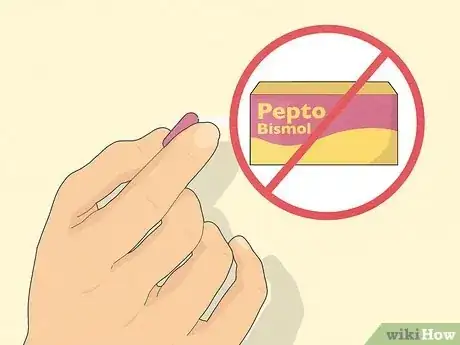

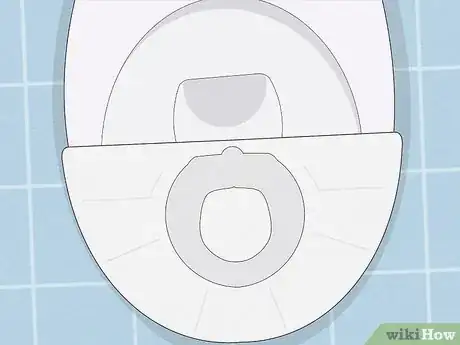

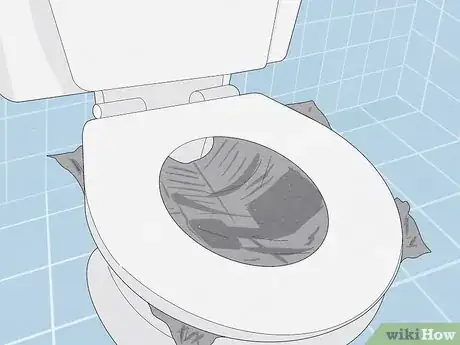
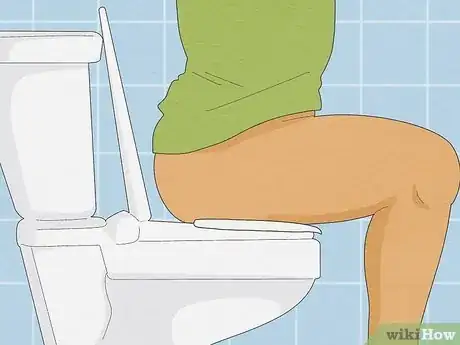
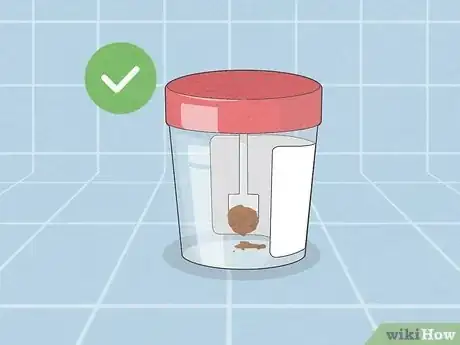
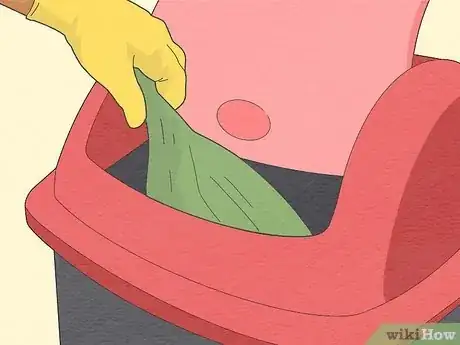
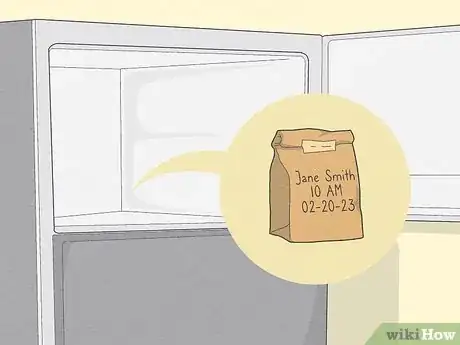
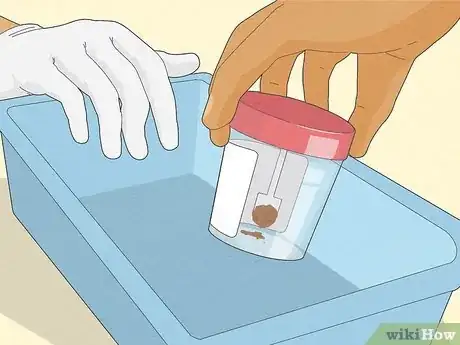
































































Medical Disclaimer
The content of this article is not intended to be a substitute for professional medical advice, examination, diagnosis, or treatment. You should always contact your doctor or other qualified healthcare professional before starting, changing, or stopping any kind of health treatment.
Read More...